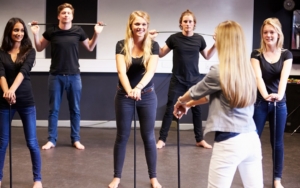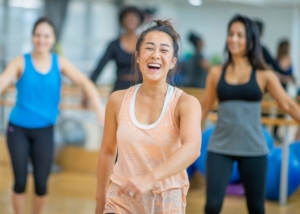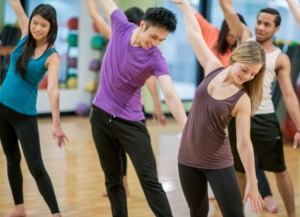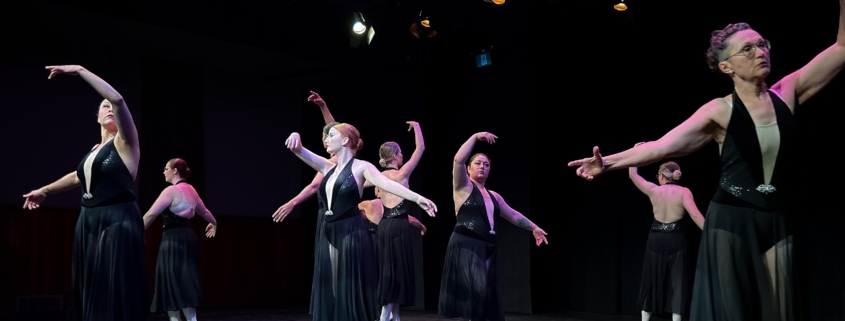What’s so important about recreational adult performance dance?
We tend to associate formal performance dance training with children or professional adults. But each year, more and more adults are falling in love with performance dance training as a hobby and a lifestyle. However, many adult dancers are still not taken seriously and experience fewer options than children in the same activities. Often, dance teachers and studios view adult dancers as casual participants who “just want to have a fun time”, and tend to ignore the goals that adult dancers have to perfect their craft. I have had the absolute honour in my lifelong dance career to learn that adult dancers are passionate, driven, creative, and have so much to give to our international performance dance community. Perhaps if we can recognize the value and unique experiences they bring to our world, we can provide more support and opportunities for them to grow and shine as the artists they are.
 First, let us provide context and definition to the term “adult performance dance training”. The performance dance styles typically refer to dancing that is created for a stage with the purpose of presenting to an audience: Ballet, Jazz, Tap, Lyrical, Contemporary, Modern, etc. I am not referring to dance styles like Ballroom, Swing, Burlesque, Pole, or other circus arts like Aerial Cube, Silks, etc. I am also not including cultural dance styles which are often done for performance, but are also shared socially amongst members of the cultural group. Therefore, for the purposes of this written piece, I will be referring to “performance dance” as those styles named above that are typically offered in a studio environment to children, who may become professionals to create pieces in these styles intended for view by a paid audience at a theatre.
First, let us provide context and definition to the term “adult performance dance training”. The performance dance styles typically refer to dancing that is created for a stage with the purpose of presenting to an audience: Ballet, Jazz, Tap, Lyrical, Contemporary, Modern, etc. I am not referring to dance styles like Ballroom, Swing, Burlesque, Pole, or other circus arts like Aerial Cube, Silks, etc. I am also not including cultural dance styles which are often done for performance, but are also shared socially amongst members of the cultural group. Therefore, for the purposes of this written piece, I will be referring to “performance dance” as those styles named above that are typically offered in a studio environment to children, who may become professionals to create pieces in these styles intended for view by a paid audience at a theatre.
There are typically two types of adult recreational dancers – the absolute beginner to dance, and the dancer who trained as a child and is either continuing into adulthood or is returning after a break from dance (the experienced adult dancer). When a beginner adult dancer starts their journey into performance dance training, they don’t just need to learn the physical posture and movements of the dance style – they are also learning about concepts like formations, timing, synchronicity (matching their fellow dancers), learning choreography, stage presence, and independent rehearsal skills. On top of these concepts, they may experience elements of dancewear, costuming, make-up, hair styling, and rehearsal and show etiquette for the first time. Beginner adult dancers must learn all these skills at once in order to go from never having danced in a studio environment before to going on stage with a group and performing a choreographed piece in a dance show.
 The experienced adult dancer tends to already have all the skills mentioned above, but they are missing the opportunity in their lives to use those skills and continue to hone them, in a world where adult movement options are generally wellness or sport-based (i.e. going to the gym, attending a fitness class, joining a recreational sports team, etc.). Both groups of adult dancers are included in my discussion here, and both bring unique experience and value to our community.
The experienced adult dancer tends to already have all the skills mentioned above, but they are missing the opportunity in their lives to use those skills and continue to hone them, in a world where adult movement options are generally wellness or sport-based (i.e. going to the gym, attending a fitness class, joining a recreational sports team, etc.). Both groups of adult dancers are included in my discussion here, and both bring unique experience and value to our community.
When either type of dancer chooses to take dance class as an adult, they are typically looking for something fun that helps them stay fit and maybe meet a few people. They are rarely aware of the extra benefits that will be afforded to them by training for a group or solo performance. While the obvious benefits remain – physical fitness & ability, mind-body connection & awareness, memory & mental sharpness – there are more surprising benefits that arise when you train in dance as an adult. Dancers form a commitment to their craft and their team: this is one of the only ways many adults get to enjoy this sense of devotion to a hobby, and not to an obligation like work or their families. Weekly group training promotes a team environment that creates a sense of purpose and belonging, and it is the exact atmosphere where bonds are formed and friendships are made. Adult dancers also experience a deeper understanding of themselves in dance training. Whether they are beginner or advanced, dance training requires a full-body-and-mind involvement: the athleticism requires proper nutrition, physical conditioning, and injury awareness, the content & choreography requires a mental acuity and presence that is constantly demanding, and the artistry requires an emotional vulnerability and honesty with oneself that is easily avoided in other aspects of life. Therefore, in contrast to almost any other endeavor, proper dance training (even once a week!) provides adults with a means to maintain physical fitness, mental clarity, and emotional wellness in a socially rewarding atmosphere.
While it may seem obvious now why dance training is a beneficial activity for the average adult in our society, the real obstacle what we are presented with today is that adult dancers are not particularly valued by the dance community at large. Recreational adult dancers continue to be an afterthought, included as a monolith instead of with recognition of different training backgrounds and goals. Many opportunities exist for children engaged in recreational dance training, with the understanding that not every child will grow up to be a professional dancer, but they all deserve the same opportunities to experience the joy of dance regardless. Why does this mentality stop when a dancer has reached 18 years old?
 Historically, one may think of performance dance forms as primarily having value in an entertainment capacity: dance artists creating and rehearsing a piece to perform in a theatre for a paying crowd. This is a commodified view on dance and while I personally love arranging performance shows of this nature, the entertainment value to the audience is not the only significant impact this has on our community. Adults engaging in recreational performance dance are creating art together as a social group, with their bodies, minds, and hearts. They are coming to a safe communal meeting space on a regular basis to decompress from their lives and lift each other up. Many of these adults have full-time occupations elsewhere, and have more disposable income to contribute to this world they love. These dancers have unique and diverse backgrounds and lived experiences since they did not grow up dancing – they bring a healthy dose of perspective and balance to the performance dance world, which can become insular and short-sighted. These dancers have different physical and mental needs, which challenge traditional teaching practices and promote accessibility. Adult dancers who bring their full lives and selves to their recreational dance classes are injecting the exact antidote that the performance dance world needs in order to heal from the toxic aspects of its historically exclusive culture and evolve to celebrate diversity, passion, and authentic expression.
Historically, one may think of performance dance forms as primarily having value in an entertainment capacity: dance artists creating and rehearsing a piece to perform in a theatre for a paying crowd. This is a commodified view on dance and while I personally love arranging performance shows of this nature, the entertainment value to the audience is not the only significant impact this has on our community. Adults engaging in recreational performance dance are creating art together as a social group, with their bodies, minds, and hearts. They are coming to a safe communal meeting space on a regular basis to decompress from their lives and lift each other up. Many of these adults have full-time occupations elsewhere, and have more disposable income to contribute to this world they love. These dancers have unique and diverse backgrounds and lived experiences since they did not grow up dancing – they bring a healthy dose of perspective and balance to the performance dance world, which can become insular and short-sighted. These dancers have different physical and mental needs, which challenge traditional teaching practices and promote accessibility. Adult dancers who bring their full lives and selves to their recreational dance classes are injecting the exact antidote that the performance dance world needs in order to heal from the toxic aspects of its historically exclusive culture and evolve to celebrate diversity, passion, and authentic expression.
Adult performance dancers are bearing the brunt of the necessary revolution in performance dance, and they are loving it. Why not value and support them for that?
Caelia Gardiner is founder, owner, Artistic Director, and head teacher of Dance Alive Studios. She began her journey at Juliette’s Dance Centre when she was 8 years old and since then has been involved in all dance forms and completed multiple dance exams in Jazz and Ballet through the CDTA (Canadian Dance Teacher’s Association) and the RAD (Royal Academy of Dance). She trained most heavily in Ballet, completing her highest level exam in Advanced Foundation, but continuing training until Advanced 2 in both old and new syllabus.
She began assistant teaching with Madame Juliette Perrey-Perez in 2008 where she assisted her first adult ballet class. She began teaching solo in 2011 with two adult ballet classes, and has grown the program ever since.


